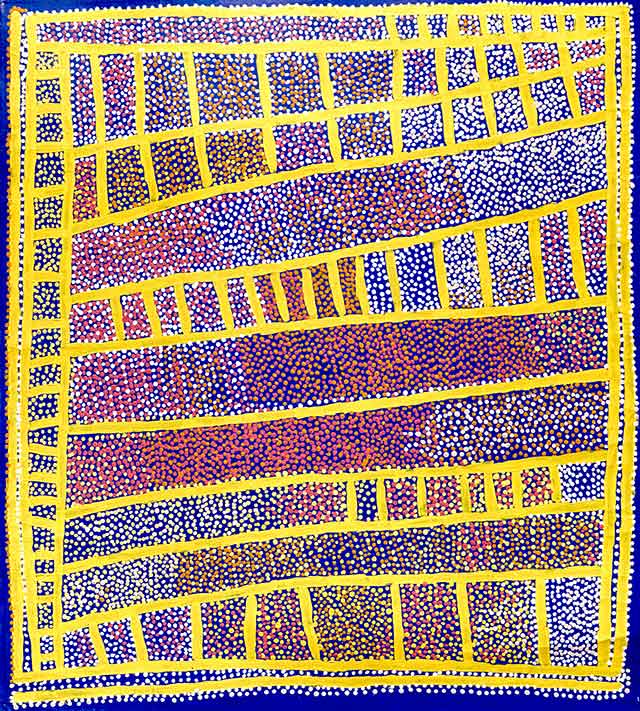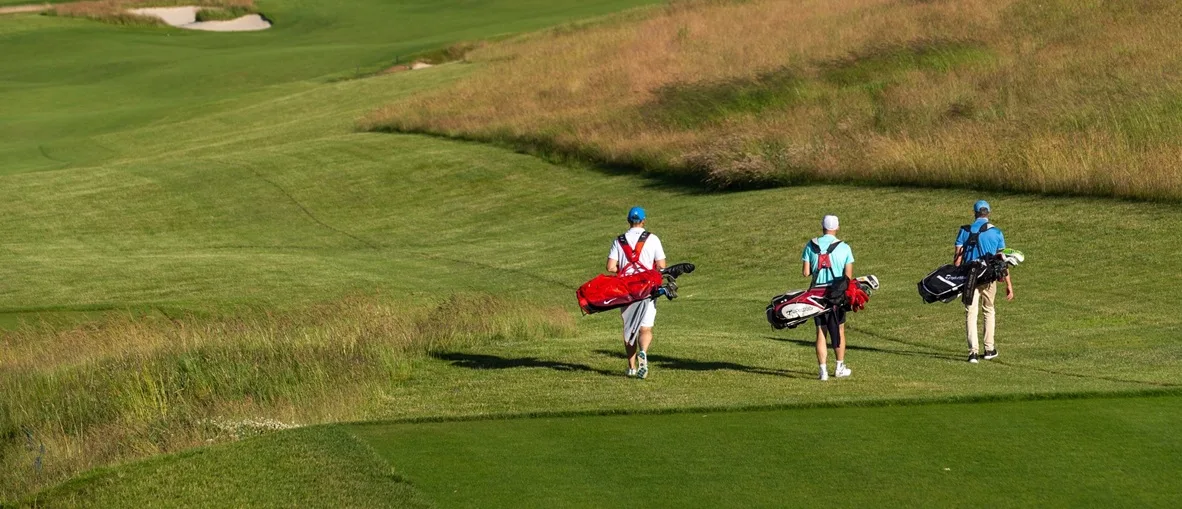By Alexandra O’Brien
Aboriginal art is the world’s oldest art making tradition, spanning at least 60,000 years. Australia is both the inspiration and the canvas. The artistic tradition was used to convey practical knowledge and ceremonial practices drawn from the Dreamtime with interweaving stories of historical significance, map making, cautionary tales, love stories and law.
The contemporary art movement began in 1971 with Geoffrey Bardon encouraging Papunya elders to paint their stories. The elders hold the sacred knowledge so grappled with the notion of sharing it outside their clan groups. The stories we see across so many fabulous paintings are what the artist deems suitable for the uninitiated to see: the secret stories either not shared or hidden under flurries of dots and broad brushstrokes like those from Utopia, where Earth’s Creation by Emily Kame Kgnawarre hailed from.
The paintings of the desert regions are bold, beautiful abstracts based on Aboriginal Dreamtime stories and the unique culture of the region which feature the landscape, plants and animals found in the Central Australian Outback. The subjects span figurative depictions of desert plants, desert topography, geography and stories from the Dreamtime. Canvases are often primed with black paint representing the colour of their skin harking back to the body painting tradition still ceremonially significant today.
During the first 30 years of the movement, many artists picked up a paint brush for the first time in their 70s and in Minnie Pwerle’s case, she was 80. There are various reasons for this late uptake: Shorty Jangala Robertson, traumatised by the Coniston Massacre, skirted around “white fella’s” for years, and only started painting when he was 76. Others had to wait until they achieved sufficient seniority and knowledge in their kinship group to give them the authority to paint their stories.
.

It must be emphasised that most Aboriginal artists have never received any formal training and are not, on the whole, influenced by Western paintings traditions. Indeed many do not speak English, like the famous Gloria Petyarre who would tell you the UK is “some place over blue sea’” with an arm waving in a wholly opposite direction.
Mina Mina Dreaming paintings by Walpiri artists trace the contours of the sand-hills and the edible fungi found there. Judy Napangardi Watson famously painted the snake vine found on the desert oaks at Mina Mina. Her powerful, multicoloured works exude an energy that takes you back to the land of extreme contrasts where the temperature can reach 40 degrees during the day and hit zero throughout the night. During their nomadic lives the desert Aboriginals walked from dawn to dusk looking for food and water, singing to Country and performing ceremonies retaining their symbiotic relationship with the land.
The Tjalptjarri brothers, Pintupi people, are the last group to come out of the desert in 1989 after reconnecting with family 30 years after they were collected and taken to the Kiwirrkurra settlement. Now major artists, the Tjapaltarri brothers are custodians of the Tingari Cycle, a story that takes you on a sacred journey throughout the sand-hills and escarpments of the outback similar to following a maze with no beginning or end. The outstanding piece by Warlimpirringa Tjapaltjarri’s Mamult Junkunya recently sold at the Sotheby’s Aboriginal March auction shows his skill at conveying a minimalist aesthetic of powerful simplicity while sharing elements of his ancient culture and sacred land with us, the uninitiated.
To read the complete interview reserve your copy of I-M, Intelligent Magazine, on sale May 21st from all good stores.
About Alexandra O’Brien
Alexandra O’Brien comes from a background of journalism, film and TV but having always had a good eye for art, she decided to start a gallery when she moved to the UK from Australia. In 2008, the Aboriginal art dealer Fred Torres came to the UK and asked O’Brien to deal on behalf of his Aboriginal family.
Recently, O’Brien founded Bay Gallery Home, a permanent Aboriginal art gallery in the Cotswolds, where she developed the award winning collection My Country: design with origin, pioneering Aboriginal high end interiors. Aside from receiving the World Interiors News Award, Surface & Accessories at the Design Museum in London and being featured in magazines internationally, Bay Gallery Home has recently been shortlisted for two SoGlos awards.
Bay Gallery Home offers a range of core products for interiors, including tiles, wallpapers, rugs, fabrics, furniture and extends a made to order facility to designers and architects who may wish to commission exclusive bespoke pieces. My Country contributes to the debates about archaeology, horticulture, botany, anthropology, and the preservation of ancient & indigenous cultures.
The Collection was created with the utmost consideration for codes of conduct and spiritual sensibilities. Due to the meaning and importance of every element in the artworks, Bay Gallery Home enlists state of the art techniques to ensure the detailed quality of each piece is preserved in the design process. The artists the Gallery represents are remunerated for the original purchase of artwork and receive a percentage of the interiors sale – a unique secondary income stream that has direct bearing on the mobility, educational and work opportunities of often isolated communities.
www.baygalleryhome.com

















Show Comments +